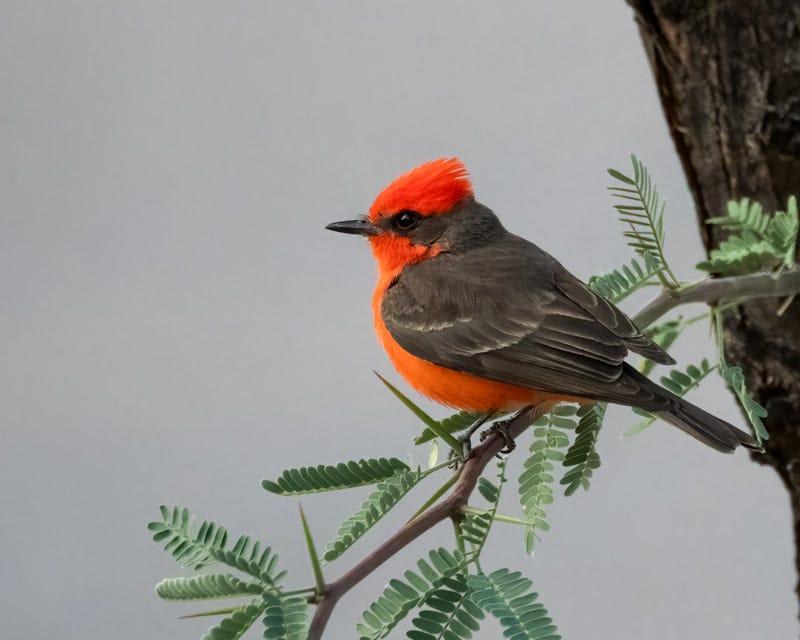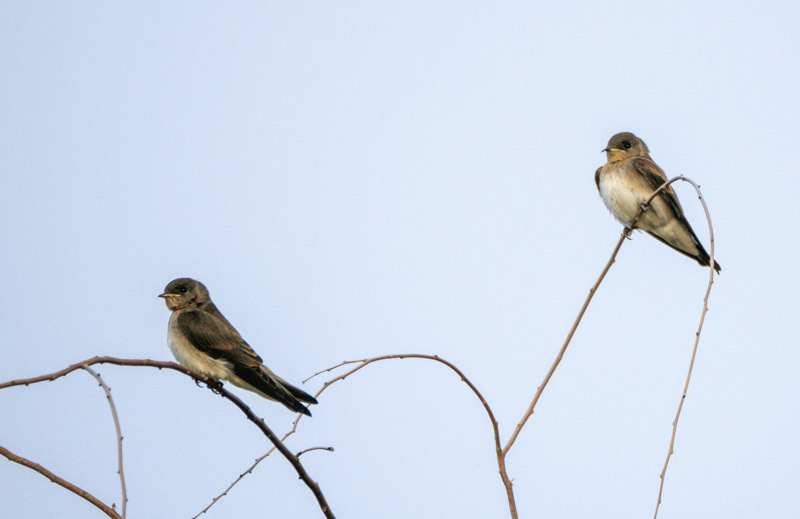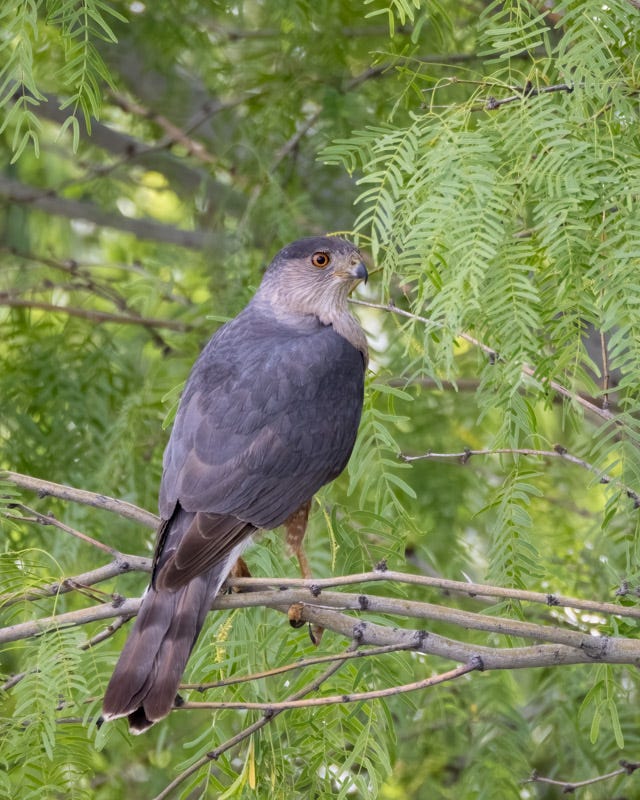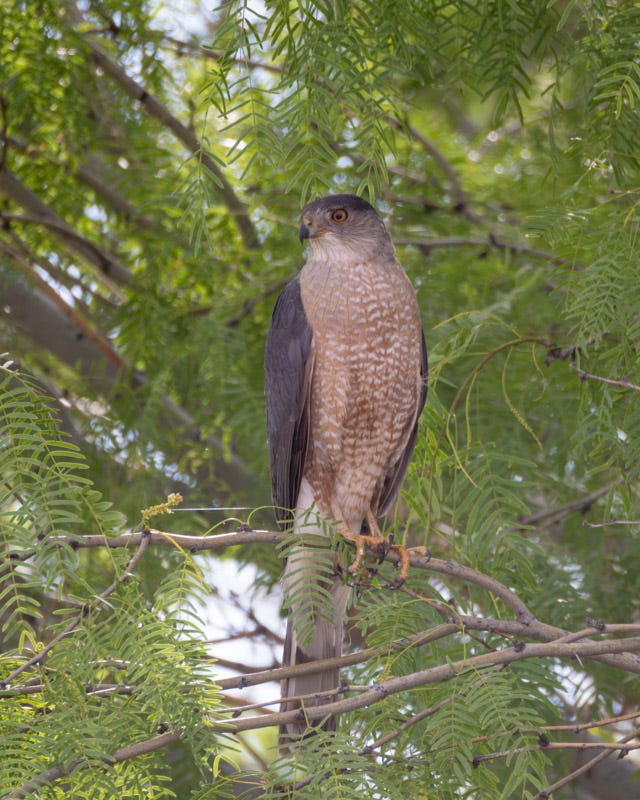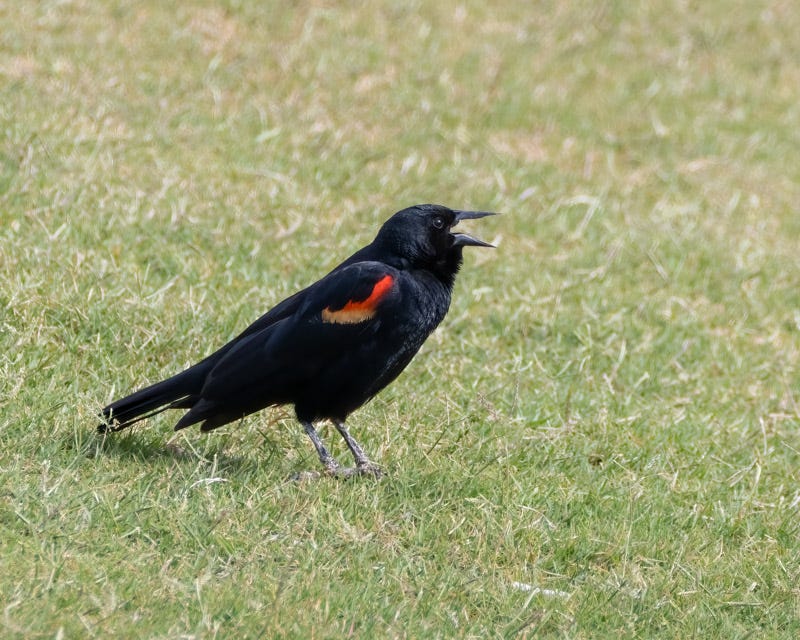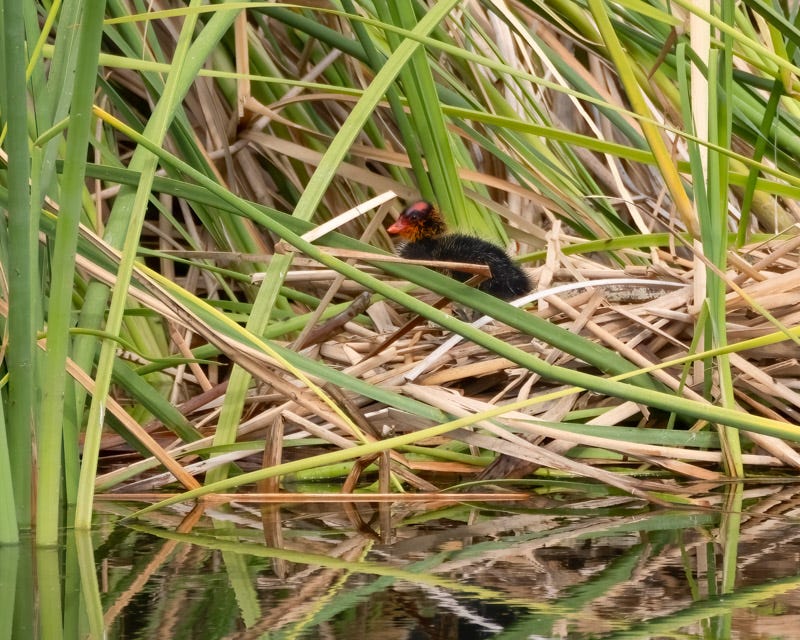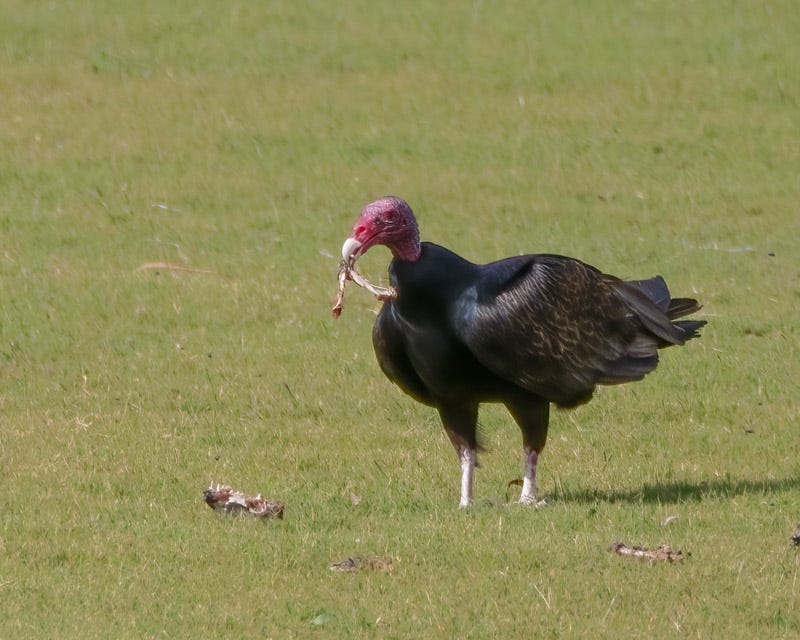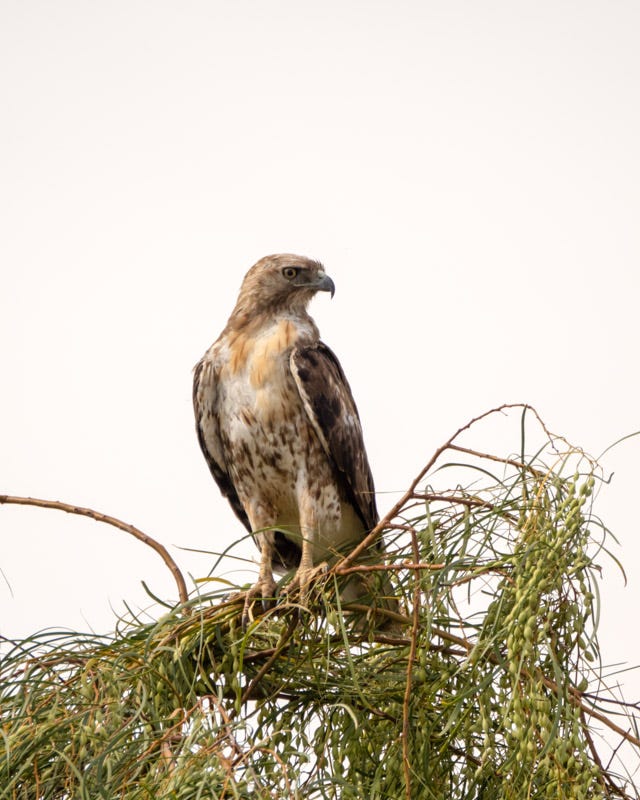Report From a Visit to a Golf Course
We are given special permission to bird this course
We started our walk at 5:30 AM, right at sunrise. The first bird to greet us was this very handsome Vermilion Flycatcher.
With summer here, many of the swallows have begun to return. There were a number of Northern Rough-winged Swallows catching insects over the water and a small group was resting on a nearby tree snag.
A pair of Cooper's Hawks have been nesting in a thick Cottonwood tree on one of the higher hills. There must be young on the nest because both adults were standing guard on adjacent trees watching us suspiciously.
We didn't approach the nest and took a wide berth around the spot. The Cooper's Hawks watched us the entire time.
Thanks to the reeds along the shorelines of the creeks and ponds, there is a nice group of Red-winged Blackbirds present. At this time of year we usually don't see them, as the birds are in nests or protecting nests that are buried in the reeds. This male was out on a fairway making himself heard. This Birdnote piece may let you know what our blackbird was doing: https://www.birdnote.org/listen/shows/red-winged-blackbird-harem
We saw our first of the year baby American Coots. Two were swimming around with an adult but this one coot was enjoying sitting in its nest.
A Turkey Vulture soared overhead, a common sight in the summer. But this Turkey Vulture dipped down, circled us, and then landed on a fairway we had just walked past.
If you look closely, you can see a few objects on the fairway that seemed to have attracted the 'TV'.
When it felt assured we were at a proper distance and not any kind of trouble, the Turkey Vulture took a few steps forward and then began partaking of the pieces of prey that another predator had left on the course.
Just beyond the Turkey Vulture were a few Ruddy Duck ducklings. You can see this tiny duckling's feet paddling behind it. Spring and early summer was definitely in the air.
Our final special bird of the morning was this immature Red-tailed Hawk. Its lightly colored eyes let us know this bird is not yet a mature adult. Perhaps it hatched last summer. But the light brown feathers on its breast was an interesting feature for us.
Up next, another unusual owl experience.


